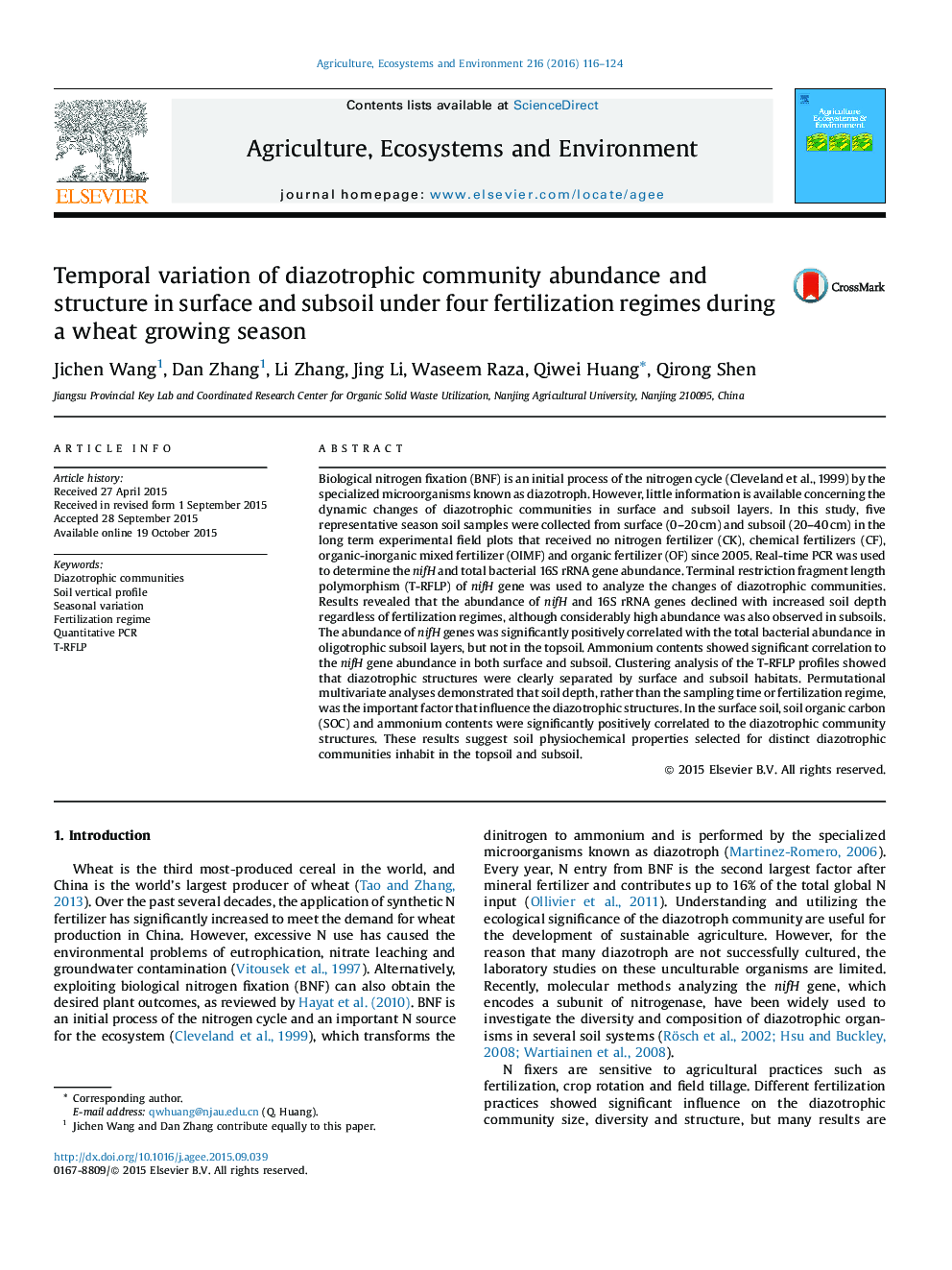| کد مقاله | کد نشریه | سال انتشار | مقاله انگلیسی | نسخه تمام متن |
|---|---|---|---|---|
| 2413632 | 1552036 | 2016 | 9 صفحه PDF | دانلود رایگان |
• Depth is the strongest factor influencing diazotrophic community size and structure.
• Diazotroph abundance were related to bacteria in subsurface but not surface soil.
• Abundant nifH genes could also be present in the deep soil layers.
• Fertilization effect on diazotrophic community was significant but inconstant.
Biological nitrogen fixation (BNF) is an initial process of the nitrogen cycle (Cleveland et al., 1999) by the specialized microorganisms known as diazotroph. However, little information is available concerning the dynamic changes of diazotrophic communities in surface and subsoil layers. In this study, five representative season soil samples were collected from surface (0–20 cm) and subsoil (20–40 cm) in the long term experimental field plots that received no nitrogen fertilizer (CK), chemical fertilizers (CF), organic-inorganic mixed fertilizer (OIMF) and organic fertilizer (OF) since 2005. Real-time PCR was used to determine the nifH and total bacterial 16S rRNA gene abundance. Terminal restriction fragment length polymorphism (T-RFLP) of nifH gene was used to analyze the changes of diazotrophic communities. Results revealed that the abundance of nifH and 16S rRNA genes declined with increased soil depth regardless of fertilization regimes, although considerably high abundance was also observed in subsoils. The abundance of nifH genes was significantly positively correlated with the total bacterial abundance in oligotrophic subsoil layers, but not in the topsoil. Ammonium contents showed significant correlation to the nifH gene abundance in both surface and subsoil. Clustering analysis of the T-RFLP profiles showed that diazotrophic structures were clearly separated by surface and subsoil habitats. Permutational multivariate analyses demonstrated that soil depth, rather than the sampling time or fertilization regime, was the important factor that influence the diazotrophic structures. In the surface soil, soil organic carbon (SOC) and ammonium contents were significantly positively correlated to the diazotrophic community structures. These results suggest soil physiochemical properties selected for distinct diazotrophic communities inhabit in the topsoil and subsoil.
Journal: Agriculture, Ecosystems & Environment - Volume 216, 15 January 2016, Pages 116–124
